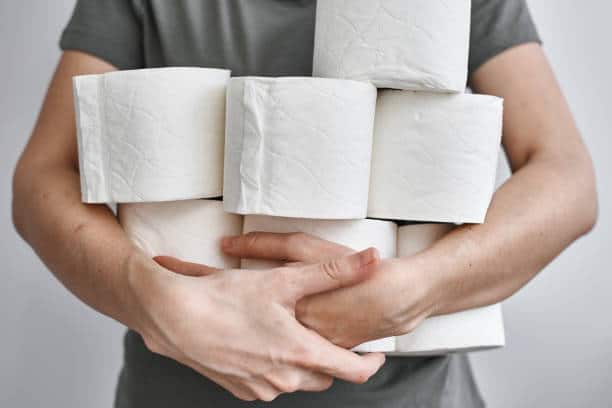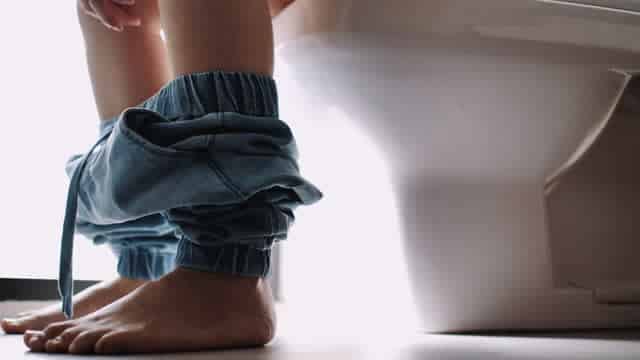It’s crucial to rehydrate yourself when you have diarrhea or are recuperating from it to replace the fluids you’ve lost. Even while most bouts of diarrhea resolve on their own within a few days without medication, they can cause serious dehydration.
How much should you drink per day?
While most people typically need to drink at least 8 cups of fluids each day, you may be required to drink more during or after diarrhea. Drink as much liquid as possible, but avoid dehydrating drinks loaded with caffeine, sugar, prunes, or alcohol since these ingredients can have a laxative impact and exacerbate diarrhea.

Take little, regular sips of your beverage rather than downing it all at once, or munch on some ice chips. Until you can drink regularly, increase your intake to 1 ounce every hour, then to 2 ounces every hour, and so on.
You should take the required precautions to prevent serious dehydration if the frequency and volume of watery stools are large and don’t stop after a few days. As soon as you can, call your physician.
How to relieve diarrhea

If you have diarrhea, the following things might make you feel better:
- Every day, consume 8 to 10 glasses of clear liquids. The best is water.
- You should hydrate yourself with at least a cup (240 ml) of drink whenever you have a loose bowel movement.
- Instead of three large meals, space out your meals throughout the day.
- Consume salty meals like soup, pretzels, and sports beverages.
- Consume some potassium-rich meals like bananas, skinless potatoes, and fruit juices.
Water isn’t enough
Although drinking simple water during and after diarrhea is beneficial, your body loses electrolytes and other crucial elements that water alone cannot provide. Because of this, drinking nutrient-infused water is the most secure approach to rehydrating after diarrhea.
What to drink
Oral Rehydration Solutions
Better than water alone, an oral rehydration solution (ORS) is a consumable fluid that promotes hydration. Any ORS should have the following three components:
Clean water
A reliable tap supply or a professionally sealed water bottle should be used to provide clean water for an ORS. If you don’t have access to clean water, boiling the water for one to three minutes will purify it.
Carbohydrates
The most common type of carbohydrate in oral rehydration treatments is sugar, which your body can easily absorb and utilize as energy.
Electrolytes
In oral rehydration solutions, electrolytes, including calcium, sodium, magnesium, and potassium, are frequently present (among others). These electrolytes control your body’s nerve and muscle function, water balance, and acid/base levels.
What types of food and drinks should be avoided during diarrhea?
Until the body heals, those with diarrhea might consume only clear liquids for a day. The meals and beverages listed below should be specifically avoided when experiencing diarrhea.
Grains
- Foods high in fiber and whole grains (whole-wheat pasta, bran, whole-wheat bread, whole-grain crackers, whole-grain cereals, and brown rice)
Fruits
- Fruits in cans with a thick sweet syrup, unprocessed fruits with skin, prune juice, juices with pulp, and apple juice
Vegetables
- Veggies that are raw and have skins and seeds.
- Veggies that produce gas (broccoli, corn, dark leafy greens, beans, cauliflower, peas, and cabbage)
Dairy
- Products made from full-fat dairy (sour cream, whole milk, cream, cheese, and ice cream)
Proteins
- Meats that are fatty and spicy (salami, fried meats or fried fish, bologna, hot dogs, and bacon)
- Nuts, seeds, and chunky nut butter.
Beverages
- Caffeinated or sweetened beverages (soda, coffee, tea, alcohol, energy drinks, and drinks that contain sugar alcohols such as xylitol or sorbitol)
Others
- Sweets, desserts, and fried and greasy dishes
- Hot foods (strong spices, pepper, and hot sauce)
- Foods and beverages that contain sugar alcohols, such as xylitol and sorbitol. They can be found in sugar-free foods, including candy, gum, and snack bars. (For information on sugar alcohols, read ingredient lists.)

Jay
Jay is a health and wellness enthusiast with expertise in water quality and nutrition. As a knowledgeable advocate for holistic well-being, Jay successfully manages Type 2 Diabetes through informed lifestyle choices. Committed to sharing reliable and authoritative insights, Jay combines firsthand experience with a passion for enhancing health."
